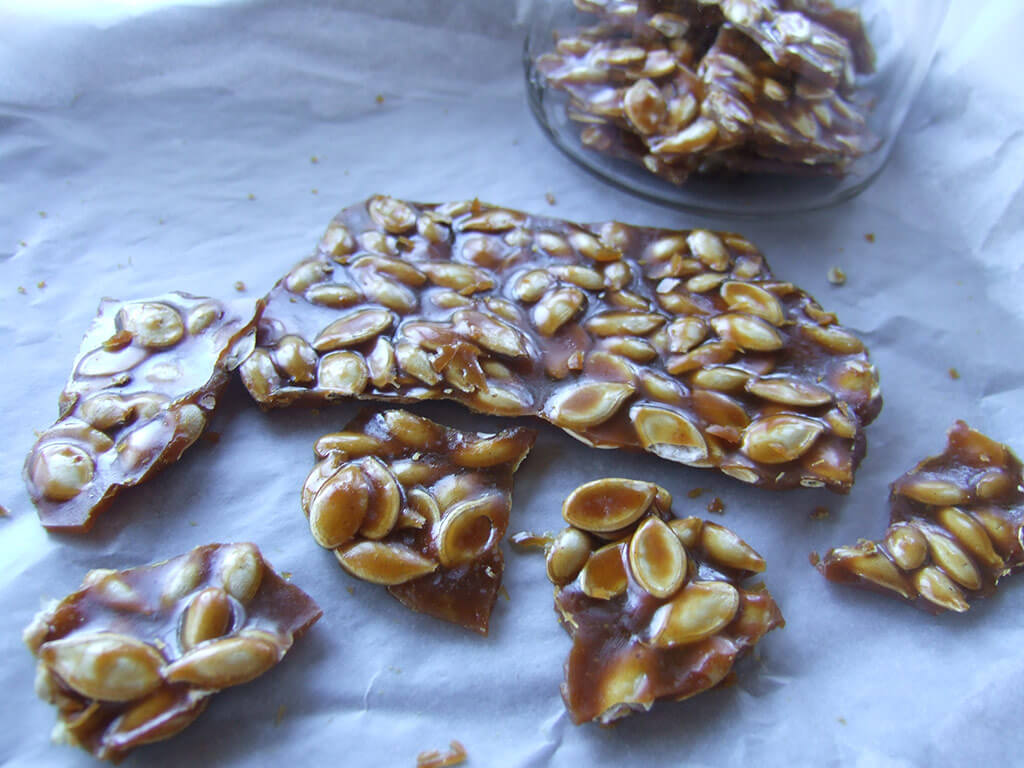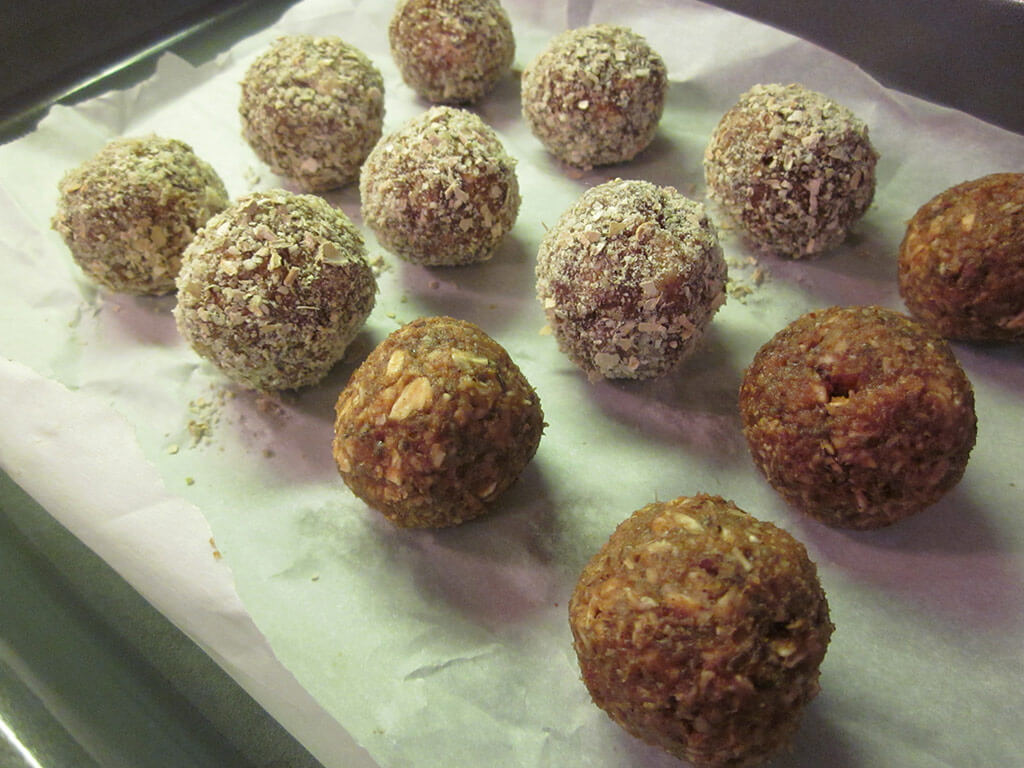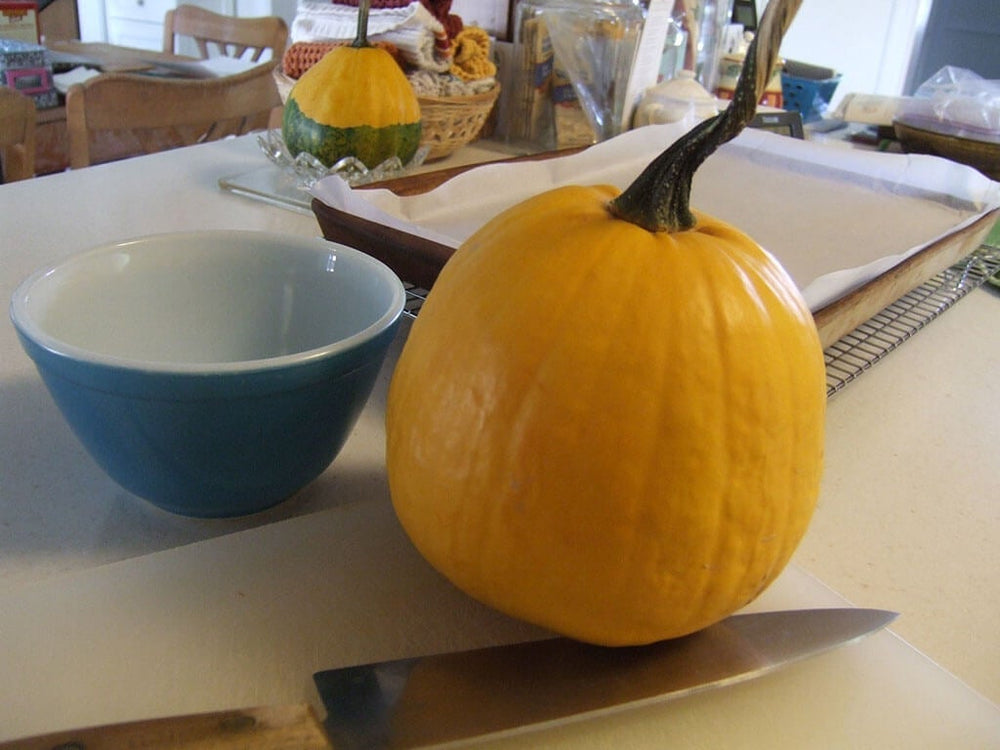I love to eat pumpkin seeds! Whether left over from cleaning out a pie pumpkin or making pumpkin puree, pumpkin seeds boast a wealth of culinary possibilities. I consider these nutritious seeds to be one of nature's best — and most versatile — snacks, and use them in a wide variety of ways in my own kitchen.
One of my favorite ways to prepare pumpkin seeds is to roast them with some kind of seasoning. It all starts, of course, with removing the seeds from the pumpkin. I've found that separating them from the pumpkin flesh while the flesh is still moist makes it easier, and I use running water to help detach the pulp. Next, I spread the seeds on wax or parchment paper (no need to remove the outer shell) and let them dry overnight before roasting. Don't place them on paper towels, because they'll bond to the towel fibers as they dry.
Once they're dry, I like to toss the seeds with a little olive, coconut, or canola oil (or melted butter, if I'm feeling decadent), coat them with my chosen seasoning blend, and roast at 350°F until crispy, shaking the pan occasionally while they cook. (Lining the pan with parchment can also help prevent sticking and burnt edges.) Some of my favorite flavor combinations are:
- Cracked pepper and Parmesan
- Honey and sriracha or wasabi
- Maple or brown sugar and cinnamon
- Rosemary with garlic or smoked paprika
- Pumpkin spice
- Bourbon and cayenne
- Sea salt and vinegar
Once they've cooled, store roasted pumpkin seeds in an airtight container in the fridge for up to three months. (Though if you're anything like me, I can guarantee they won't last three days, much less months — they're seriously addictive.)


But it's not just about roasting. Raw or dry-roasted (unsalted) pumpkin seeds make a great addition to a variety of dishes. I like to add them to:
- Homemade granola
- Tossed salad greens
- Roasted sweet potatoes
- Soup (especially pumpkin puree soup)
- Oatmeal
- Trail mix
- Muffins
- Quick breads
- Cookies
- Oatmeal
- Any winter squash side dish
- Roasted Brussels sprouts
- Casseroles (try them as a topping)
- Caramel corn
- No-bake cookies (especially pumpkin-flavored)

They can also be subbed in for more common ingredients:
- Use pumpkin seeds instead of peanuts in your favorite brittle recipe.
- Replace pine nuts with pumpkin seeds when making pesto.
- Process seeds in a coffee grinder and substitute for part of the flour in baking recipes. Store excess ground pumpkin seeds in the freezer or fridge.
Don't limit yourself to pumpkins, either. Seeds from other winter squash varieties, like butternut, buttercup, and acorn squashes, work just as well. (With some of the bigger types, seeds have thicker shells that might need removed before eating. One bite into a raw one will tell you.)
Have I convinced you yet to try your hand at making pumpkin seeds? In my kitchen, it's a go-to activity that starts in fall and continues all winter long, each time I break out a winter squash. The only downside is that they don't last long enough because they're just that good!
Article written by Julie Martens Forney.




 Herbs
Herbs
 Vegetables
Vegetables
 Fruit
Fruit
 Flowers
Flowers
 Succulents
Succulents


